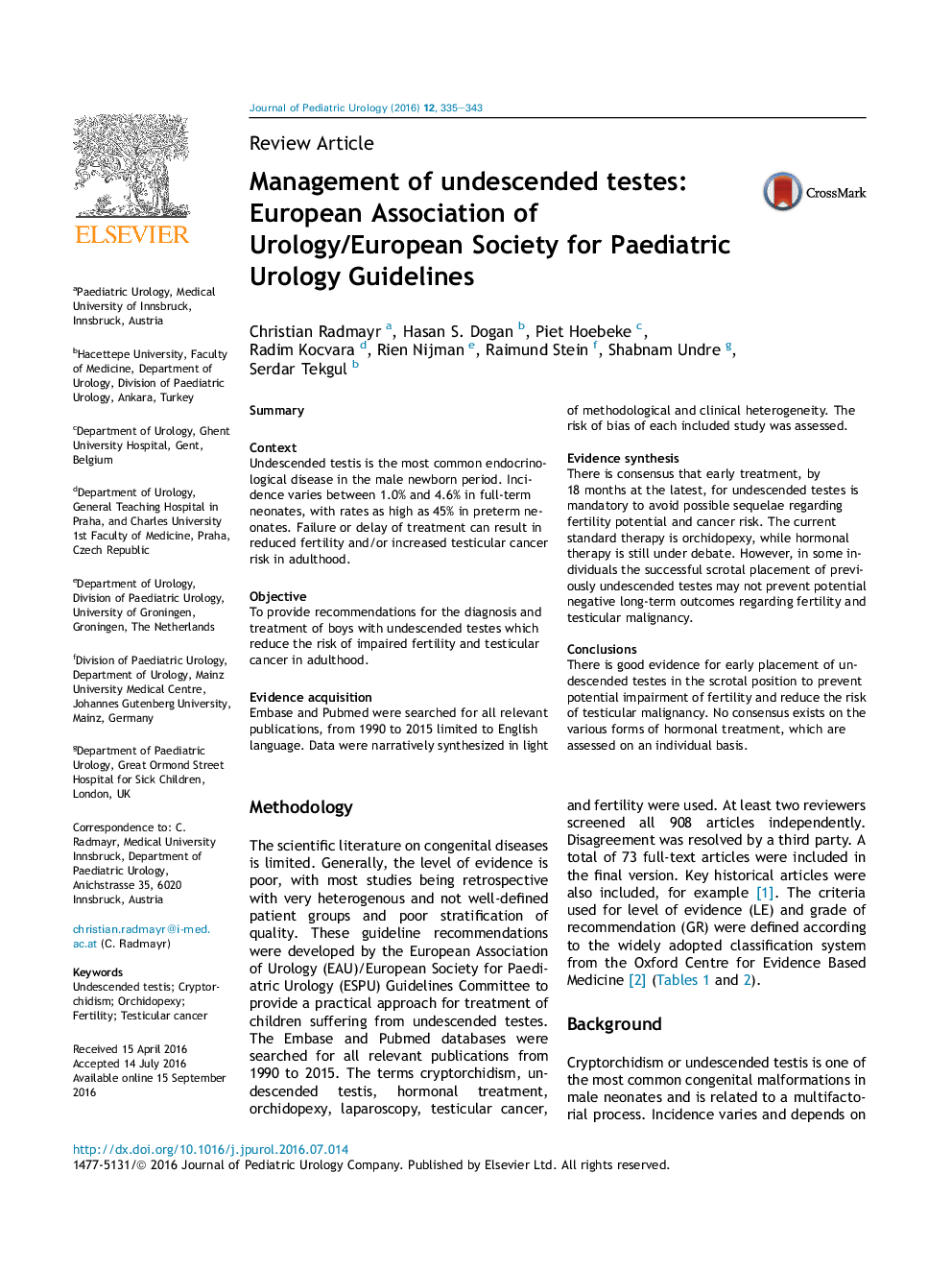| Article ID | Journal | Published Year | Pages | File Type |
|---|---|---|---|---|
| 5718698 | Journal of Pediatric Urology | 2016 | 9 Pages |
SummaryContextUndescended testis is the most common endocrinological disease in the male newborn period. Incidence varies between 1.0% and 4.6% in full-term neonates, with rates as high as 45% in preterm neonates. Failure or delay of treatment can result in reduced fertility and/or increased testicular cancer risk in adulthood.ObjectiveTo provide recommendations for the diagnosis and treatment of boys with undescended testes which reduce the risk of impaired fertility and testicular cancer in adulthood.Evidence acquisitionEmbase and Pubmed were searched for all relevant publications, from 1990 to 2015 limited to English language. Data were narratively synthesized in light of methodological and clinical heterogeneity. The risk of bias of each included study was assessed.Evidence synthesisThere is consensus that early treatment, by 18 months at the latest, for undescended testes is mandatory to avoid possible sequelae regarding fertility potential and cancer risk. The current standard therapy is orchidopexy, while hormonal therapy is still under debate. However, in some individuals the successful scrotal placement of previously undescended testes may not prevent potential negative long-term outcomes regarding fertility and testicular malignancy.ConclusionsThere is good evidence for early placement of undescended testes in the scrotal position to prevent potential impairment of fertility and reduce the risk of testicular malignancy. No consensus exists on the various forms of hormonal treatment, which are assessed on an individual basis.
